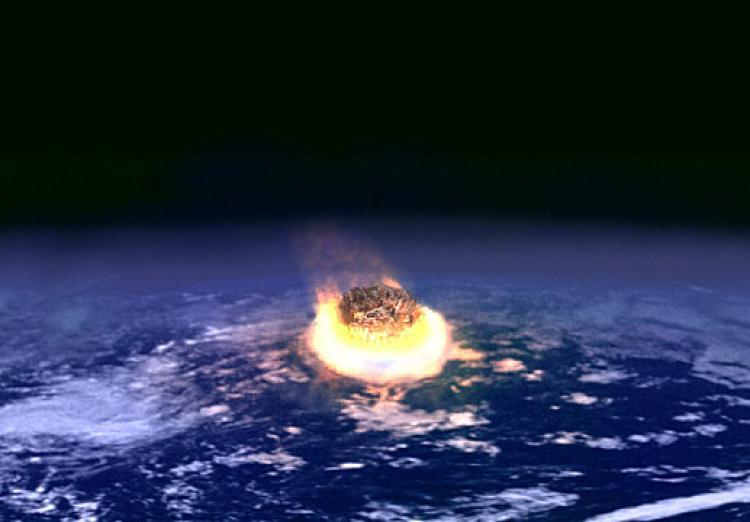The Apophis asteroid could collide with the Earth on April 13, 2036, Russian astronomers say, according to Science.
“Apophis will approach Earth at a distance of 37,000–38,000 kilometers (22,990–23,612 miles) on April 13, 2029,” Professor Leonid Sokolov at St. Petersburg State University told Science. “Its likely collision with Earth may occur on April 13, 2036.”
However, Sokolov said that the possibility of an actual strike is highly unlikely, because the 900-foot-long chunk of space rock will probably break up into fragments before then, leading to smaller collisions with our planet over several years.
Sokolov and his colleagues are predicting the event based on the possibility that the asteroid’s trajectory could be altered if it passes through a small gravitational keyhole in 2029.
NASA has confirmed the scenario put forward by the Russian space agency, following the discovery of Apophis in 2004, when NASA originally considered it a substantial threat to Earth’s future.
“Technically, they’re correct, there is a chance in 2036 [that Apophis will hit Earth],” said Donald Yeomans, head of NASA’s Near-Earth Object Program Office, according to space website Life’s Little Mysteries.
But Yeomans said the probability of this happening is only 1-in-250,000. In April 2029, the asteroid will travel within five Earth radii of the planet, but there is only a “miniscule” chance it will pass through the keyhole, which is not much bigger than Apophis itself. If it does, however, it will be sent on a 2036 crash course for Earth, Yeomans said.
Nevertheless, Sokolov and his colleagues are developing plans of action based on the various scenarios and further observations of the asteroid.
According to Yeomans, NASA can devise a strategy and technology to alter the asteroid’s orbit if necessary, after observing Apophis with optical telescopes and radar systems when the asteroid makes a close pass by Earth some time in late 2012 and early 2013, Life’s Little Mysteries reported.
One option, also the simplest, would be to send a spacecraft into a collision course with the asteroid, as happened in 2005 when Deep Impact was used to divert the comet Tempel 1.
“Apophis will approach Earth at a distance of 37,000–38,000 kilometers (22,990–23,612 miles) on April 13, 2029,” Professor Leonid Sokolov at St. Petersburg State University told Science. “Its likely collision with Earth may occur on April 13, 2036.”
However, Sokolov said that the possibility of an actual strike is highly unlikely, because the 900-foot-long chunk of space rock will probably break up into fragments before then, leading to smaller collisions with our planet over several years.
Sokolov and his colleagues are predicting the event based on the possibility that the asteroid’s trajectory could be altered if it passes through a small gravitational keyhole in 2029.
NASA has confirmed the scenario put forward by the Russian space agency, following the discovery of Apophis in 2004, when NASA originally considered it a substantial threat to Earth’s future.
“Technically, they’re correct, there is a chance in 2036 [that Apophis will hit Earth],” said Donald Yeomans, head of NASA’s Near-Earth Object Program Office, according to space website Life’s Little Mysteries.
But Yeomans said the probability of this happening is only 1-in-250,000. In April 2029, the asteroid will travel within five Earth radii of the planet, but there is only a “miniscule” chance it will pass through the keyhole, which is not much bigger than Apophis itself. If it does, however, it will be sent on a 2036 crash course for Earth, Yeomans said.
Nevertheless, Sokolov and his colleagues are developing plans of action based on the various scenarios and further observations of the asteroid.
According to Yeomans, NASA can devise a strategy and technology to alter the asteroid’s orbit if necessary, after observing Apophis with optical telescopes and radar systems when the asteroid makes a close pass by Earth some time in late 2012 and early 2013, Life’s Little Mysteries reported.
One option, also the simplest, would be to send a spacecraft into a collision course with the asteroid, as happened in 2005 when Deep Impact was used to divert the comet Tempel 1.






